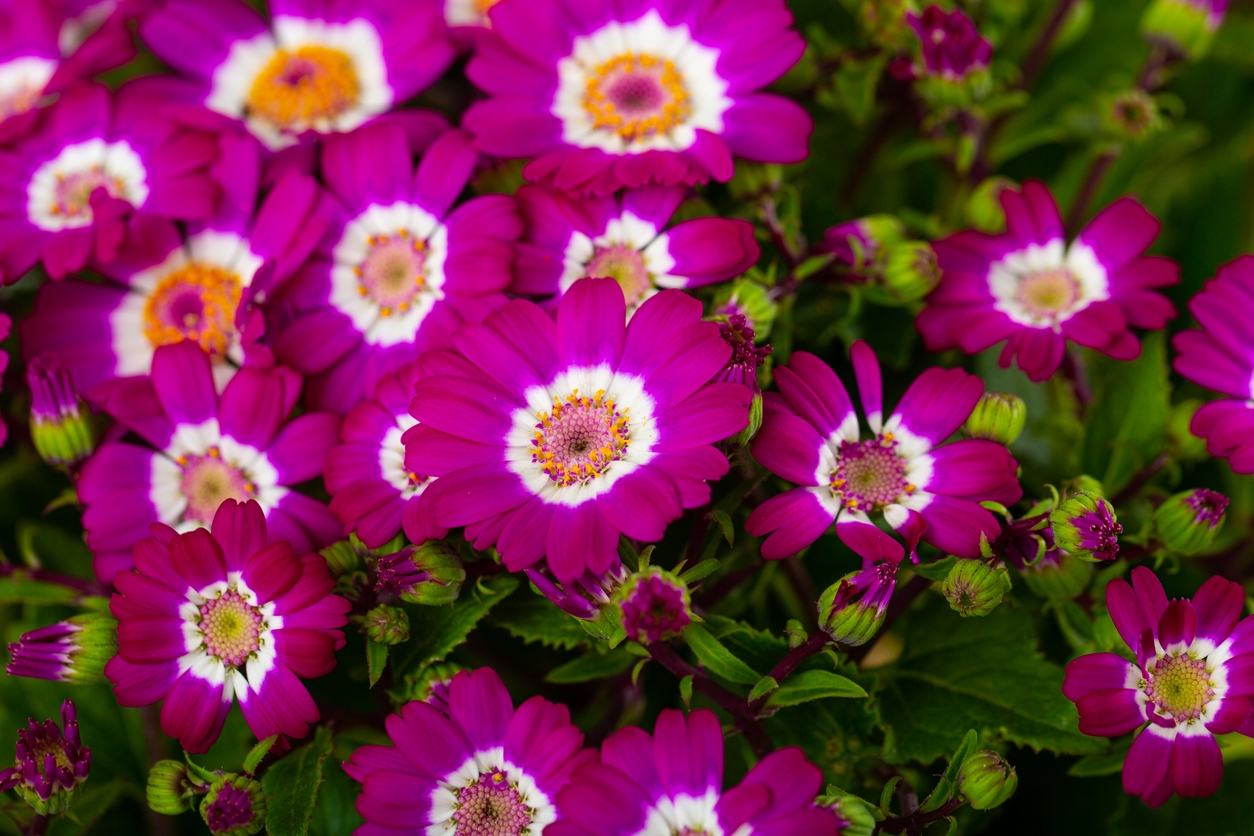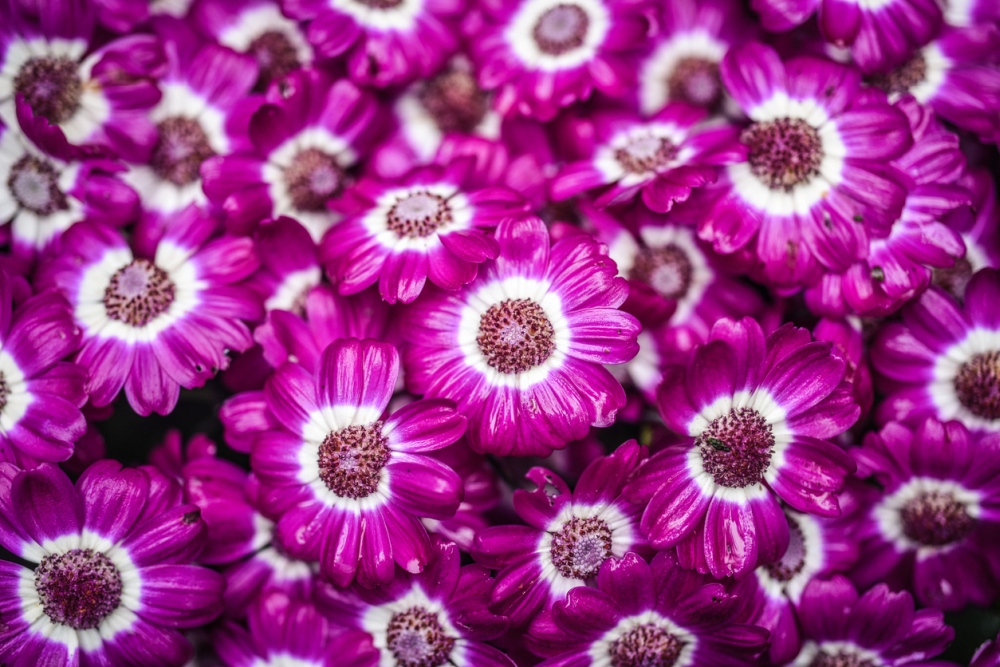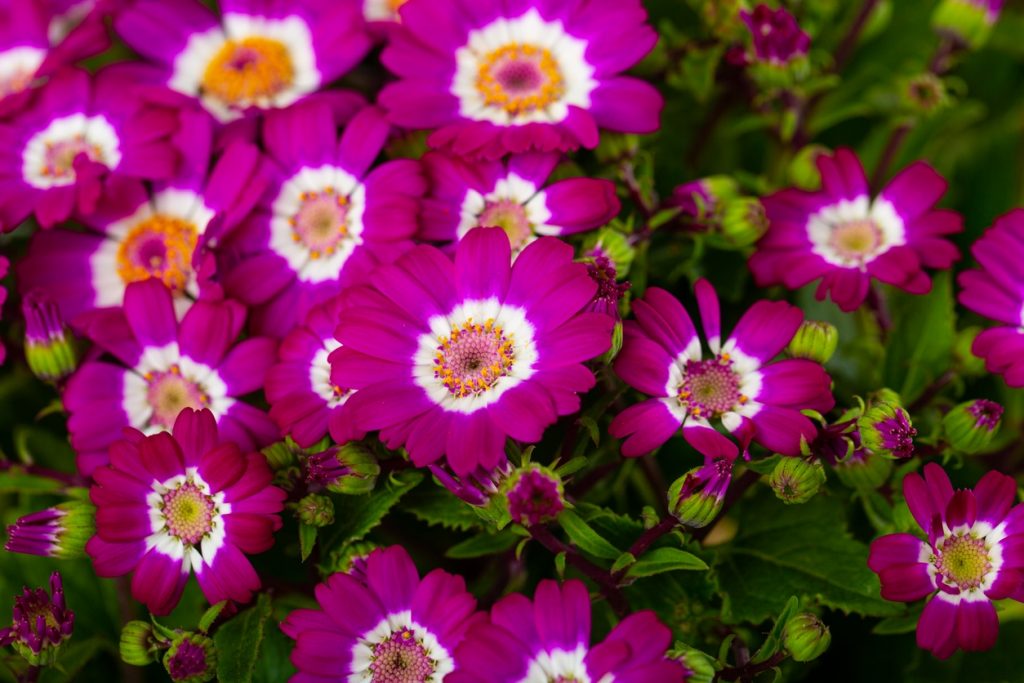Cineraria Plant: Growing & Caring Guide
Filling up a dull space in your garden with colorful blooms is almost every gardener’s dream. In this guide, we’ll check out a perfect bloomer you might want to try out—the Cineraria plant. This flowering perennial has gone through many phases over the decades and still remains a vibrant option if you’re looking to landscape your garden with a plant that blooms for a long duration. Let’s check out some of the bits and pieces you want to put together when growing and caring for Cineraria plants.
More About Cineraria Plants
These daisy-like flowers have been dominantly treated as annuals all across the United States. Apart from the blooms, they form a tiered set of leaves that usually reach between 12’ to 24’ inches tall. For gardeners living in USDA hardiness zones 9 to 11, it’s fairly easy to grow this flowering plant as a perennial. Tracing the Cineraria plant back to its roots, we learned that it belongs to the Asteraceae family.And this type is among the most sought-after flowering plants since the blooms tend to last a little longer and come in different shades of purple, pink, blue, and white.
Besides its colorful blooming capabilities, each miniature flower is on this plant is has a tiny white ring in the middle. Since the late 1700s when this flower was discovered by horticulturists from the British Royal Gardens, it hasn’t done well in hot and dry environments. Some call it the first flower of spring because the plant prefers cold weather and blooms with the first two weeks of February.
Cineraria Plant Caring Tips
Flowering & Fragrance
During the blooming season, Cineraria plants produce daisy-like flowers that usually grow in clusters and are held by tall stems. The blooms make up a significant part of this plant’s lush foliage and measure about 5’ inches wide, but the size can be smaller depending on the species. It’s, however, worth noting that the flowers are seasonal. They’re more likely to survive from early spring till summer.
Watering & Feeding
Wait till the first few inches of the topsoil are entirely dry before watering yourCinerariasagain. You only need to water this flowering plant gently and don’t forget to plant it inside a medium with enough drainage holes. When the temperatures are warmer or during the blooming phase, water yourCinerariaa bit more frequently, but don’t leave the soil too soggy. To make the potting soil nutrient-rich, you can put together a few organic remedies if you’re scared of the threat posed by the exceedingly high phosphorus and nitrogen ratios often found in synthetic fertilizers.
Both fish bone meal and chicken manure are viable organic phosphorus fertilizers that rapidly promote blooming and development of the roots’ structure. These two phosphorus sources, once used as amendments, can last anywhere between 1 to 4 months. On the other side, using a slow-release fertilizer in the ratio of 14-14-14 would be ideal especially if you’re growing your Cineraria plants outdoors for landscaping. Make sure to dilute the fertilizer at 1/2 its strength and feed this plant once every two weeks until the blooming season is over.
Soil & Transplanting
For this seasonal flowering plant to bloom, you need to provide it with fertile potting soil and don’t miss to keep the entire growing medium porous. You also want to maintain the soil pH at a range between 5.0 to 6.0 throughout the growing season. On top of that, there’s a need for striking a balance between the rate of drainage and moisture retention. As much as the soil must not be soggy for a long period, the potting mixture still needs to be fairly moist since this is a tender perennial that needs a humid environment quite often.
For faster drainage, it’s best to amend the potting soil with peat moss and sand. While these two options are porous enough to let water pass through, planting your Cineraria plants inside containers with a few drainage holes would help keep the roots from rotting due to getting drenched for way too long. And since this flowering perennial is noticeably a slow grower, you can plant it in a medium-size container. There won’t be any great need for transplanting, at least, for the next couple of growing seasons. Unless, of course, the plant becomes intensely root-bound.
Light & Temperature
It’s no secret that this tender perennial is widely considered an annual. And what you’re probably not aware of is it would naturally get accustomed to cooler temperatures. But,Cinerariasaren’t frost-hardy plants. In fact, they’re not bound to survive if the nighttime temperatures fall below 35 degrees Fahrenheit. And for the flowers to survive the entire blooming cycle, some access to light with partial shade would be needful. Even when growing outdoors, it’s best to filter any direct light, especially during afternoon hours.
You want to keep yourCinerariasfar from any heat stress, so the morning bright light is just enough. Also, don’t place the container near a south or west-facing window since they receive the most heat and light from the sun. It’s hardly the norm to find a flowering perennial having much preference for a semi-lit environment. So, that would be a grand chance to brighten up any gloomy part of your garden with its high-spirited set of flowers.
Cineraria plants generally thrive in USDA hardiness zones 9,10, 11. When grown outside these hardiness zones, it would be difficult for this perennial to bloom. On average, the suitable temperature for this annual plant ranges between 55 to 65 degrees Fahrenheit. While this plant could survive under normal room temperature, it’s best to place the growing medium in a colder room.
Humidity
While it’s not easy to control the fluctuations when yourCinerariasare growing outdoors, they generally enjoy surroundings with high humidity levels. To maintain the typical humidity range it needs to thrive, working with a porous potting soil that still retains some moisture, would help keep the environment constantly humid. When growing indoors, don’t place this perennial anywhere near an air conditioner or heater. These appliances, especially during winter, make the air dry and a lot less humid—causing the houseplant to look pale.
At the same time, the roots need to experience excellent aeration, especially during a blooming season when the plant needs nutrients the most. Misting your Cinerarias a lot often would be useful, but that’s not ideal as the flowers would get ruined. To get around this downside, you can place the growing medium on a pebble tray or use an electric humidifier. Pebble trays are more effective especially if you don’t want your plant to suffer from root rot.
Grooming & Maintenance
Grooming this plant isn’t a strenuous task since there isn’t much to do. Perhaps the most you’ll do is pluck off any dead flowers. In fact, smaller Cineraria varieties don’t need to be pruned especially when growing indoors. When this flowering plant is growing outdoors, you want to trim the stem tips back by at least one-third during late winter before the growing season kicks in.
How to Propagate Cineraria Plants
Although stem cuttings are a viable option, mostCinerariasare propagated using seeds. And if you’re looking to use the latter method, you need to sow seeds before the final frosting stages. To allow the mother to plant produce seeds once again, don’t deadhead the flowers but be patients and wait for them to wither naturally. In fact,Cinerariascan reseed themselves quite easily. So, to keep them from re-seeding, deadhead the flowers soon after fading. But if you’re living in a colder region, seeds will take much longer to germinate.
Therefore, you can propagate this flowering plant using stem cuttings during the summer season. To propagate using seeds, wait till its summer or early fall, then gently sprinkle the seeds on a tray filled with moist potting soil. If you want your Cinerarias to bloom anytime around Valentine’s Day, you need to sow the seeds within the first week of September. Sow the seeds in mid-October if you want to see the blooms emerge around the Easter season.
For the seeds to germinate, they need a warm environment, so try to keep the seed tray in temperatures around 70 degrees Fahrenheit at least for the first 2 to 3 weeks. Once this period is over, the seeds will have a chunk of potential to sprout and become mature plants. So, you’ll need to transplant them into medium size containers—ideally 5’ inches wide.
After transplanting the seeds, place the growing media somewhere with bright light but cooler temperatures. Wait for the buds to emerge. Once you see results, transfer the container to a warm environment, preferably one with temperatures around 65 degrees Fahrenheit. Growing this flowering plant inside a container is crucial since you want to move inside when the frosting conditions outdoors are extreme.
Common Pests & Diseases
When growing in constantly soggy soil, Cinerarias become prone to mildew alongside a bunch of fungal diseases. So, it’s essential to check the drainage capacity of the potting soil before planting the seeds or stem cuttings. Keep the area where your Cinerarais are growing clean and get rid of any debris to reduce the chances of botrytis blight—a fungal disease that’s also commonly known as grey mold. Sap sucking pests such as aphids will leave a sooty mold on the underside of the leaves, so you also want to watch out for such signs.


